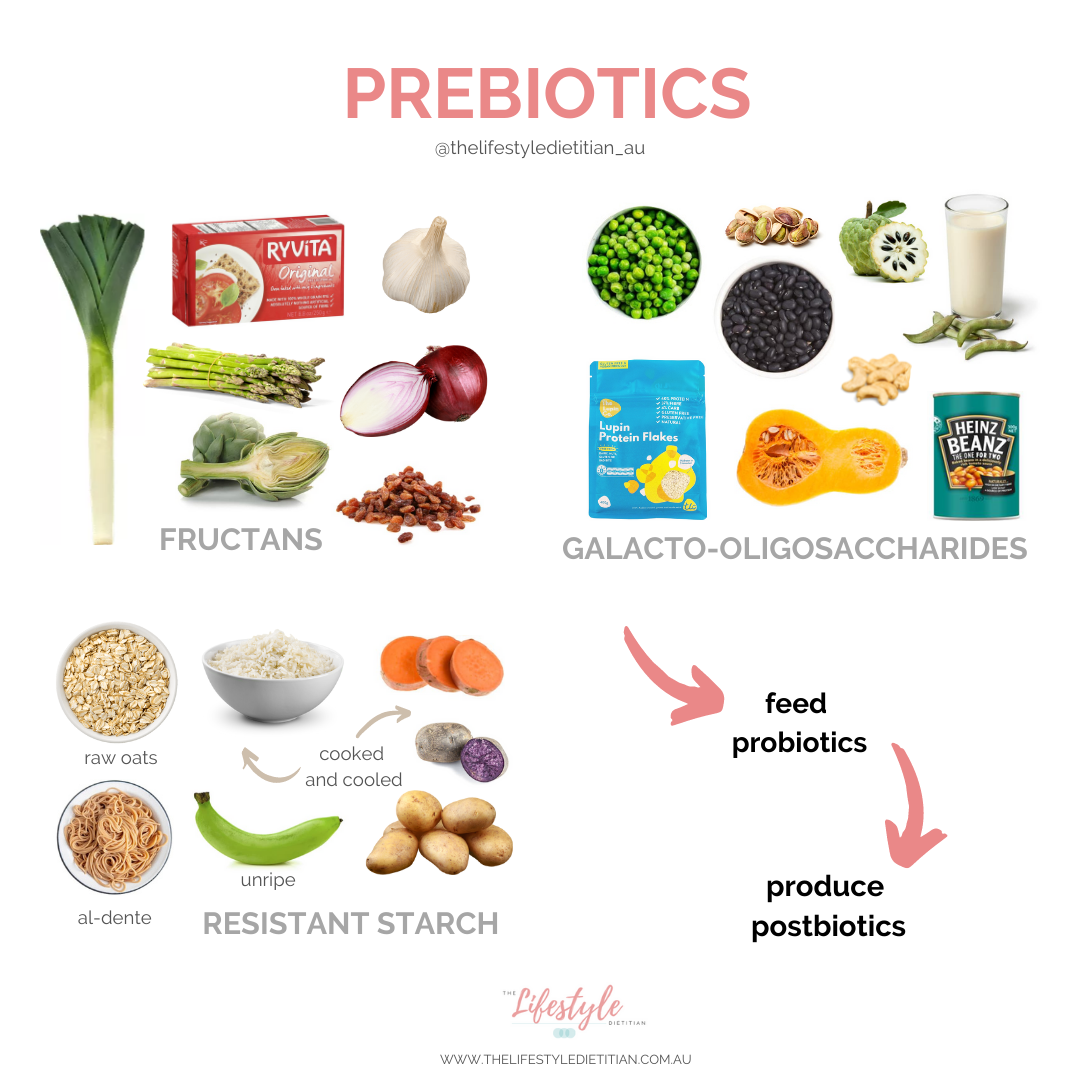Prebiotics, probiotics and postbiotics - what's the difference?
Gut health is well and truly a trending topic. Everything from probiotics, prebiotics and now postbiotics is becoming popular. That’s a lot of “biotics” to keep track of, Feeling confused? We’re here to shed light on these and how they relate to your gut health.
Probiotics
The good gut bugs living in our large intestine that are scientifically proven to benefit our health. They help build a strong immune system, produce hormones and vitamins, protect against inflammation and support mental health (just to name a few). Probiotics and similar live cultures can be found in supplements or foods like yoghurt, sauerkraut, kefir, kimchi and tempeh. Eating probiotics is like planting new seeds (of good bacteria) in a garden (your gut).
Prebiotics
Think of prebiotics as the fertiliser that feeds the probiotics. Without prebiotics, probiotics are unable to grow, survive and support our health. Examples of foods rich in prebiotics are plant foods that contain fructans, galacto-oligosaccharides or resistant starch. Some fibres which are fermentable and other plant compounds called polyphenols are also prebiotics.
Postbiotics
The different by-products made by probiotics when they feast and ferment prebiotics. These compounds are responsible for the health benefits associated with probiotics. Short-chain fatty acids (SCFA) are a well-known postbiotic and include:
Acetate
Most abundant in our gut and plays a role in appetite and weight regulation. This SCFA feeds and nourishes other bacterial species in our gut that produce other postbiotics.
Propionate
Linked with reducing inflammation in our gut, lowering blood sugar levels and appetite control.
Butyrate
The primary fuel source for cells lining our gut to keep them happy, healthy and our gut lining strong. A robust gut barrier prevents harmful toxins from entering our bloodstream and triggering certain health conditions. Butyrate also activates the production of appetite-regulating hormones.
So what’s the key to achieving optimal gut health? Having a diet that supports a diverse community of good gut bugs! Regularly eating a variety of prebiotic-rich plant foods is your best bet - the goal is 30 different types of plant foods each week! This includes each different whole grain, legume, fruit, vegetable, nut, seed, herb and spice. Download our free plant point tracker to get started.
Need some help? Try these five diet upgrades:
Buy the can of four bean mix instead of only one legume/bean
Make a jar of mixed nuts and seeds to garnish salads, stir-fries and desserts… the options are endless!
Add sweet potato and butternut pumpkin to your usual tray of roast potatoes (tip: cooking then cooling for leftovers the next day increases the prebiotic content)
Make a filling breakfast smoothie by blending in a green unripe banana with raw rolled oats and your favourite milk/yogurt
Switch from the usual brown onions to use more leeks, shallots and red onions

